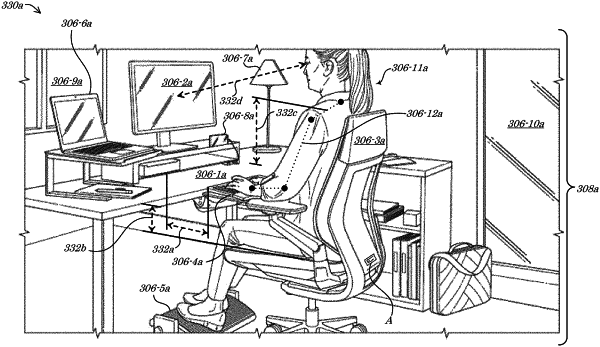| CPC G06T 7/0002 (2013.01) [G06F 3/011 (2013.01); G06F 3/016 (2013.01); G06F 18/24 (2023.01); G06F 18/24765 (2023.01); G06N 5/04 (2013.01); G06Q 10/0635 (2013.01); G06T 7/20 (2013.01); G06T 7/73 (2017.01); G06T 11/00 (2013.01); G06V 20/52 (2022.01); G06T 2207/10024 (2013.01); G06T 2207/10028 (2013.01)] | 20 Claims |

|
1. A system for Artificial Intelligence (AI) ergonomic assessment, comprising:
an electronic processing device; and
a non-transitory computer readable memory device in communication with the electronic processing device, the non-transitory computer readable memory device storing (i) ergonomic distance rules and (ii) AI ergonomic assessment instructions that, when executed by the electronic processing device, result in:
receiving, by the electronic processing device, at least one image descriptive of a work area;
identifying, by the electronic processing device and from the at least one image, a plurality of non-human objects within the work area;
classifying, by the electronic processing device, each of the identified non-human objects from the plurality of non-human objects;
computing, by the electronic processing device, an initial location for each of the identified non-human objects from the plurality of non-human objects;
measuring, by the electronic processing device and based on the initial locations of the identified non-human objects from the plurality of non-human objects, a distance between a first one of the non-human objects and a second one of the non-human objects;
identifying, by the electronic processing device and based on an analysis of the measured distance with respect to the stored ergonomic distance rules, that the first one of the non-human objects is not properly positioned;
identifying, by the electronic processing device and based on an execution of the stored ergonomic distance rules, a target location for the first one of the non-human objects;
outputting, by the electronic processing device, an indication of the target location for the first one of the non-human objects;
tracking, by the electronic processing device, a movement of the first one of the non-human objects from the initial location to a new location;
identifying, by the electronic processing device and based on a comparison of the target location and the new location for the first one of the non-human objects, that the new location for the first one of the non-human objects falls within the target location; and
outputting, by the electronic processing device, an indication that the first one of the non-human objects is properly positioned.
|